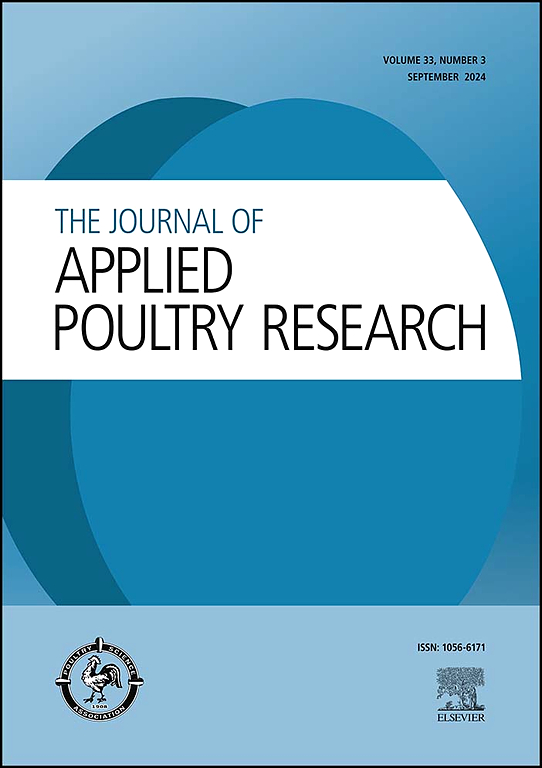Hypocholesterolemic potentials of garlic on the lipid profile of poultry birds and poultry products: A review
IF 2
3区 农林科学
Q2 AGRICULTURE, DAIRY & ANIMAL SCIENCE
引用次数: 0
Abstract
The quality of meat and eggs, as well as consumer acceptance, is influenced by microbial load, flavor, and lipid oxidation. Recently, consumer preferences have shifted toward naturally healthy, disease-free poultry products that have no negative side effects. Natural additives are now gaining popularity in research due to the presence of microbial-resistant bacteria associated with synthetic products and feed additives. Garlic and its bioactive components (BCs) have been found to improve the quality of meat and egg yolks by affecting the activities of important enzymes such as squalene oxidase and HMG-CoA reductase, which are responsible for cholesterol and lipid synthesis. However, the extent to which the organosulphur compounds (OSCs) in garlic can enhance lipid stability and reduce total cholesterol depends on various variables including preparation technique, shelf life, rate of inclusion, and duration of supplementation in bird diets. Therefore, this review aims to highlight the impact of garlic supplementation on the lipid profiles and fatty acids in poultry.
大蒜对家禽、禽类及家禽产品血脂的降胆固醇作用研究进展
肉和蛋的质量以及消费者的接受程度受到微生物负荷、风味和脂质氧化的影响。最近,消费者的偏好已经转向自然健康、无疾病、没有负面副作用的家禽产品。由于与合成产品和饲料添加剂相关的抗微生物细菌的存在,天然添加剂现在在研究中越来越受欢迎。研究发现,大蒜及其生物活性成分(BCs)通过影响角鲨烯氧化酶和HMG-CoA还原酶等重要酶的活性来改善肉和蛋黄的品质,这些酶负责胆固醇和脂质合成。然而,大蒜中有机硫化合物(OSCs)增强脂质稳定性和降低总胆固醇的程度取决于各种变量,包括制备技术、保质期、添加率和在鸟类饲料中添加的持续时间。因此,本综述旨在强调大蒜补充对家禽脂质谱和脂肪酸的影响。
本文章由计算机程序翻译,如有差异,请以英文原文为准。
求助全文
约1分钟内获得全文
求助全文
来源期刊

Journal of Applied Poultry Research
农林科学-奶制品与动物科学
CiteScore
4.10
自引率
10.50%
发文量
80
审稿时长
104 days
期刊介绍:
The Journal of Applied Poultry Research (JAPR) publishes original research reports, field reports, and reviews on breeding, hatching, health and disease, layer management, meat bird processing and products, meat bird management, microbiology, food safety, nutrition, environment, sanitation, welfare, and economics. As of January 2020, JAPR will become an Open Access journal with no subscription charges, meaning authors who publish here can make their research immediately, permanently, and freely accessible worldwide while retaining copyright to their work. Papers submitted for publication after October 1, 2019 will be published as Open Access papers.
The readers of JAPR are in education, extension, industry, and government, including research, teaching, administration, veterinary medicine, management, production, quality assurance, product development, and technical services. Nutritionists, breeder flock supervisors, production managers, microbiologists, laboratory personnel, food safety and sanitation managers, poultry processing managers, feed manufacturers, and egg producers use JAPR to keep up with current applied poultry research.
 求助内容:
求助内容: 应助结果提醒方式:
应助结果提醒方式:


